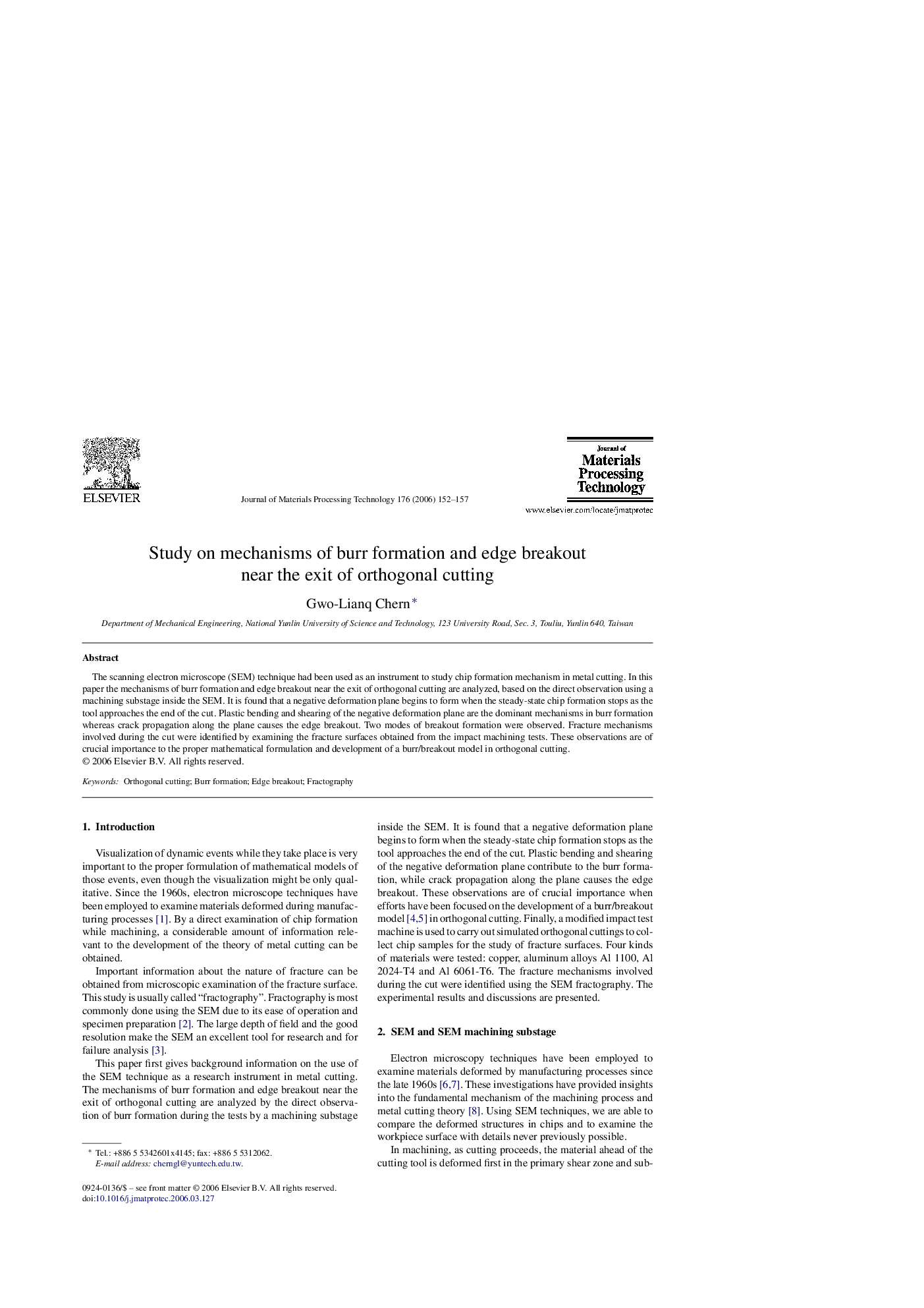| Article ID | Journal | Published Year | Pages | File Type |
|---|---|---|---|---|
| 796526 | Journal of Materials Processing Technology | 2006 | 6 Pages |
The scanning electron microscope (SEM) technique had been used as an instrument to study chip formation mechanism in metal cutting. In this paper the mechanisms of burr formation and edge breakout near the exit of orthogonal cutting are analyzed, based on the direct observation using a machining substage inside the SEM. It is found that a negative deformation plane begins to form when the steady-state chip formation stops as the tool approaches the end of the cut. Plastic bending and shearing of the negative deformation plane are the dominant mechanisms in burr formation whereas crack propagation along the plane causes the edge breakout. Two modes of breakout formation were observed. Fracture mechanisms involved during the cut were identified by examining the fracture surfaces obtained from the impact machining tests. These observations are of crucial importance to the proper mathematical formulation and development of a burr/breakout model in orthogonal cutting.
